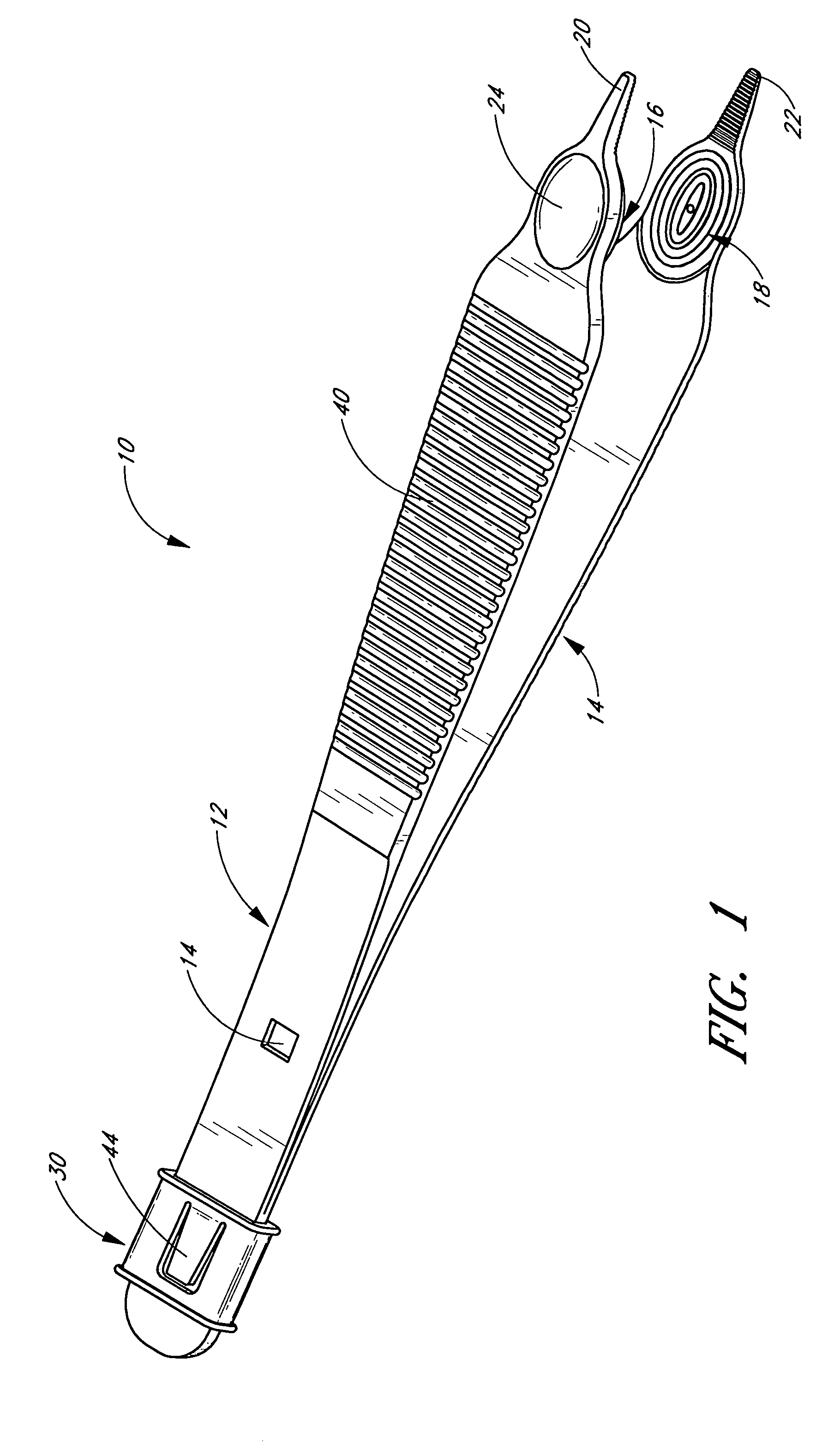Safety surgical forceps
- Summary
- Abstract
- Description
- Claims
- Application Information
AI Technical Summary
Benefits of technology
Problems solved by technology
Method used
Image
Examples
Embodiment Construction
[0056] Embodiments of the present invention provide surgical forceps that improves a clinician's ability to grip a wide variety of objects in a safe and secure manner. The forceps also improve the clinician's ability to manipulate objects without damaging the object or the forceps. Preferred embodiments are particularly well-suited for gripping and manipulating a suturing needle during the application of sutures. However, it should be appreciated that embodiments of the described forceps and / or features thereof may be used in a wide variety of applications.
[0057] With reference initially to FIG. 1, for purposes of illustration, one embodiment of a surgical forceps 10 generally includes a first elongate arm 12 and a second elongate arm 14 joined along proximal ends thereof. The first and second arms 12, 14 are preferably joined such that the arms are biased in the open position in the absence of an external gripping force by the clinician. In the illustrated embodiment, the arms are...
PUM
 Login to View More
Login to View More Abstract
Description
Claims
Application Information
 Login to View More
Login to View More - R&D
- Intellectual Property
- Life Sciences
- Materials
- Tech Scout
- Unparalleled Data Quality
- Higher Quality Content
- 60% Fewer Hallucinations
Browse by: Latest US Patents, China's latest patents, Technical Efficacy Thesaurus, Application Domain, Technology Topic, Popular Technical Reports.
© 2025 PatSnap. All rights reserved.Legal|Privacy policy|Modern Slavery Act Transparency Statement|Sitemap|About US| Contact US: help@patsnap.com



